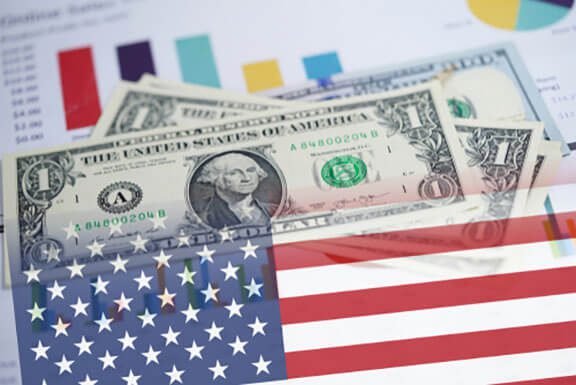If you’ve just moved to the United States, figuring out how to open a bank account as an immigrant can feel overwhelming. But having a bank account is one of the first steps toward building a secure and successful life here. Whether you’re planning to work, study, or raise a family, you’ll need access to basic banking services like receiving payments, paying rent, and saving money.
This guide walks you through everything you need to know about opening a bank or credit union account as a newcomer.
Why You Need a U.S. Bank Account
Having a U.S. bank account helps you manage your money safely. You can pay bills, receive direct deposit from employers, and send money to friends and family. It’s also easier to track your spending and build credit history, which can help you with future financial goals like renting an apartment or buying a home.
If you’re still using a foreign bank account, you may run into challenges with transfers, fees, or delayed payments. Switching to a U.S. bank or credit union gives you access to the local financial system and helps lay the groundwork for your financial security.
Types of Bank Accounts You Can Open
Checking Account
A checking account is used for everyday spending—paying rent, shopping, and getting your salary through direct deposit. Most come with debit cards, online banking, and tools to set up automatic payments.
Tip: Compare accounts that don’t charge a monthly fee or have options to waive it.
Savings Account
A savings account is where you can save money and earn interest. Look for options with a competitive annual percentage yield (APY) to grow your savings faster.
Some banks also offer money market accounts, which are a mix between checking and savings accounts, offering higher APY. To learn more, read our article on The 10 Different Types of Bank Accounts in the U.S.
What You Need to Open a Bank Account
Every bank has its own list of required documents, but most financial institutions will ask for:
Proof of Identity
You’ll need a government issued photo identification. This could be:
Passport
Foreign driver’s license
Permanent resident card
Employment authorization card
Current driver’s license from any U.S. state
If you’re unsure which documents are accepted, the U.S. Consumer Financial Protection Bureau provides a helpful guide on opening a bank account, including what banks may ask for and how to prepare.
Proof of U.S. Address
Banks usually ask for your current address. You can prove this with:
Utility bills
Lease agreement
Bank statement
Tax returns showing your U.S. address
ITIN or SSN
Not all banks require a Social Security Number (SSN). Many accept an Individual Taxpayer Identification Number (ITIN), which is issued by the Internal Revenue Service (IRS).
You can apply for an ITIN through an acceptance agent or by submitting a completed federal tax return. Visit the IRS official site to learn how to apply for an ITIN.
Some credit unions are more flexible than traditional banks when it comes to accepting alternative forms of identification and tax documentation.
Where Should You Open Your Account?
You can open an account at a bank or credit union. Each has its pros and cons.
Major Banks
Big banks like Bank of America, Wells Fargo, and Chase offer many services, mobile apps, and international wire transfers.
However, they often come with higher monthly fees or stricter ID requirements.
Credit Unions
Credit unions are nonprofit and community-focused. They usually offer lower overdraft fees, better interest rates, and more flexible rules for immigrants.
You can search for local credit unions at MyCreditUnion.gov.
Choosing just one financial institution that fits your needs is better than opening multiple accounts you won’t use.
Steps to Open a Bank Account as an Immigrant
1. Choose the Right Bank
Do some research and compare services, APY, fees, and whether the bank accepts an ITIN or other acceptable documents.
Our guide on Which Type of Bank Account is Best for Everyday Transactions is a great place to start.
2. Gather Your Required Documents
Make sure you have everything ready before visiting a bank branch or applying online. You can find a checklist of what you’ll need in our article on opening a bank account without an SSN — it’s especially helpful if you’re just starting out and don’t know where to begin.
Here’s a list to check off:
Government issued ID
Proof of current address
ITIN or Social Security Number
Opening deposit (usually $25–$100)
Utility bills or lease
Some banks may ask for more, depending on your immigration status or account type.
3. Visit a Bank Branch or Apply Online
You can go in person or use mobile banking apps to apply online. Just note that online applications may require a Social Security Number, while in-person visits are more flexible.
4. Make Your Initial Deposit
Most banks require an opening deposit to activate your account. This can usually be done by cash, check, or transfer from another account.
If you’re putting money in from a foreign bank account, ask about international wire transfer limits and fees.
Tips for Managing Your New Bank Account
Sign up for online banking and mobile banking to track your balance, set alerts, and pay bills.
Avoid overdraft fees by setting up low-balance alerts.
Use your debit card instead of cash to build a spending history.
If you’re not ready for a bank account, consider prepaid debit cards as a temporary option.
Always read the fine print—many banks charge a monthly fee unless you maintain a minimum balance.
Filing Taxes with Your New Account
If you’re earning taxable income in the U.S., you’ll need your bank account for filing taxes and receiving any refunds via direct deposit. Use your ITIN or Social Security Number when submitting your tax return.
Take Control of Your Money in the U.S.
Learning how to open a bank account as an immigrant is an essential step in your financial journey in the United States. Whether you’re opening a checking account for daily use or a savings account to plan for the future, having access to reliable banking gives you peace of mind.
Make sure you choose the right financial institution, collect all the required documents, and understand your account features before you start. With the right tools and knowledge, you can build a strong financial foundation and make the most of your new life in the U.S.


